6-Thioguanine
Synonym(s):2-Amino-6-mercaptopurine;2-Amino-6-purinethiol;6-Thioguanine
- CAS NO.:154-42-7
- Empirical Formula: C5H5N5S
- Molecular Weight: 167.19
- MDL number: MFCD00233553
- EINECS: 205-827-2
- SAFETY DATA SHEET (SDS)
- Update Date: 2025-12-23 13:58:55
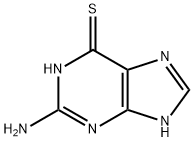
What is 6-Thioguanine?
Absorption
Absorption of an oral dose is incomplete and variable, averaging approximately 30% of the administered dose (range: 14% to 46%)
Toxicity
Oral, mouse: LD50 = 160 mg/kg. Symptoms of overdose include nausea, vomiting, malaise, hypotension, and diaphoresis.
Description
6-Thioguanine (NSC 752, Thioguanine, 2-Amino-6-purinethiol), is an antineoplastic metabolic antagonist that inhibits DNA synthesis by being metabolically converted to 6-thioGMP. This inhibits purine biosynthesis at multiple steps, and may be phosphorylated and incorporated into DNA. In humans, it causes bone marrow depression and gastrointestinal toxicity. Due to safety problems it is currently less used as an antineoplastic agent but has some use as therapy for ulcerative colitis.
Chemical properties
Crystalline, lyophilized, sterile, endot. It is white or slightly yellow powder with umami taste, easily soluble in water, but insoluble in organic solvents such as ethanol and acetone.
Originator
Thioguanine,Burroughs-Wellcome,US,1966
The Uses of 6-Thioguanine
6-Thioguanine acts as an antineoplastic and purine antimetabolite. It is also useful as an inhibition of stimulated expression of TNF-related apoptosis-inducing ligand (TRAIL) protein. It is involved in the treatment of acute leukemias and Psoriasis. Further, it is used for the treatment of ulcerative colitis and autoimmune diseases.
Indications
For remission induction and remission consolidation treatment of acute nonlymphocytic leukemias.
Background
An antineoplastic compound which also has antimetabolite action. The drug is used in the therapy of acute leukemia.
What are the applications of Application
6-Thioguanine is an immunosuppressive, anti-neoplastic, and anti-cancer
Definition
ChEBI: 6-Thioguanine is a 2-aminopurine that is the 6-thiono derivative of 2-amino-1,9-dihydro-6H-purine.
Indications
6-Thioguanine is a purine analogue structurally related to 6-mercaptopurine and azathioprine. Thioguanine interferes with several enzymes required for de novo purine synthesis, and its metabolites are incorporated into DNA and RNA, further impeding nucleic acid synthesis. The mechanism of action of thioguanine in psoriasis is not clearly understood; it has been hypothesized to affect the proliferation and trafficking of lymphocytes as well as the proliferation of keratinocytes.
What are the applications of Application
6-Thioguanine is a variant of guanine with hydrogen bonding at the N-7 of the purine ring. Its association with cytosine alters the dimension of the base stacking. 6-Thioguanine usage in treating inflammatory bowel disease (IBD) contributes to nodular regenerative hyperplasia (NRH) in the liver.
6-Thioguanine has been used:
to induce autophagy and apoptosis in colorectal cancer cell lines HCT116
as a selection marker in the mutation and survival assay in chinese hamster lung fibroblasts culture V79
as a selection marker in clonogenic Lung metastasis assay of 4T1-luc cells
Manufacturing Process
A mixture of 2.7 grams of finely divided guanine, 10 grams of pulverized phosphorus pentasulfide, 10 ml of pyridine and 100 ml of tetralin was heated at 200°C with mechanical stirring for 5 hours. After cooling, the mixture was filtered and the insoluble residue treated with 150 ml of water and 50 ml of concentrated ammonium hydroxide. The ammoniacal solution was filtered, heated to boiling and acidified with acetic acid. Upon cooling, 2-amino-6- mercaptopurine precipitated as a dark yellow powder, according to US Patent 2,697,709.
brand name
Tioguanine is INN and BAN.
Therapeutic Function
Cancer chemotherapy
General Description
6-thioguanine appears as odorless or almost odorless pale yellow crystalline powder. The drug is available in 40-mg tablets for oral use. It is used to treat acute nonlymphocytic leukemia.
Air & Water Reactions
6-Thioguanine may be sensitive to prolonged exposure to air. Insoluble in water.
Reactivity Profile
6-Thioguanine is incompatible with strong oxidizing agents.
Fire Hazard
Flash point data for 6-Thioguanine are not available; however, 6-Thioguanine is probably combustible.
Biochem/physiol Actions
Ribosylated and phosphorylated by the same pathway as natural purine bases; as the nucleotide, inhibits a variety of cellular processes involved in nucleic acid synthesis. Has a long history as an effective treatment of leukemia.
Mechanism of action
The mechanism of action involves incorporation of thetriphosphate into DNA and RNA, resulting in inhibition ofprocessing and function. Thioguanine is a purine antagonist. It is a pro-drug that is converted intracellullarly directly to thioguanine monophosphate (also called 6-thioguanylic acid) (TGMP) by the enzyme hypoxanthine-guanine phosphoribosyl transferase (HGPRT). TGMP is further converted to the di- and triphosphates, thioguanosine diphosphate (TGDP) and thioguanosine triphosphate (TGTP). The cytotoxic effect of thioguanine is a result of the incorporation of these nucleotides into DNA. Thioguanine has some immunosuppressive activity.1 Thioguanine is specific for the S phase of the cell cycle.
Pharmacokinetics
Thioguanine is an antineoplastic anti-metabolite used in the treatment of several forms of leukemia including acute nonlymphocytic leukemia. Anti-metabolites masquerade as purine or pyrimidine - which become the building blocks of DNA. They prevent these substances becoming incorporated in to DNA during the "S" phase (of the cell cycle), stopping normal development and division. Thioguanine was first synthesized and entered into clinical trial more than 30 years ago. It is a 6-thiopurine analogue of the naturally occurring purine bases hypoxanthine and guanine. Intracellular activation results in incorporation into DNA as a false purine base. An additional cytotoxic effect is related to its incorporation into RNA. Thioguanine is cross-resistant with mercaptopurine. Cytotoxicity is cell cycle phase-specific (S-phase).
Side Effects
Dose-related myelosuppression is the major adverse effect produced by 6-thioguanine. Patients deficient in thiopurine methyltransferase (TPMT), a cytosolic enzyme required for metabolism of 6-thioguanine, are at heightened risk. Other adverse effects include gastrointestinal complaints and elevations of liver transaminases. There have been rare reports of more serious hepatotoxicity, including acute hepatitis, acute cholestasis, and hepatic venoocclusive disease.
Safety Profile
Poison by ingestion andintraperitoneal routes. Human mutation data reported. Anexperimental teratogen. Other reproductive effects. Ahuman skin irritant. When heated to decomposition itemits very toxic fumes of SOx and NOx.
Synthesis
Thioguanine, 2-aminopurin-6-thiol (30.1.2.12), is made from 2,8-dichloro- 6-hydroxypurine (30.1.2.7), in which the second chlorine atom at C2 is replaced with an amino group when reacted with ammonia, forming 2-amino-8-chloro-6-hydroxy-purine (30.1.2.7), which is then reduced by hydrogen iodide to 2-aminopurin-6-ol (30.1.2.11). Replacement of the hydroxyl group with a mercapto group at C6 is carried out by reacting it with phosphorous pentasulfide, which forms thioguanine (30.1.2.12).

Veterinary Drugs and Treatments
Thioguanine may be useful as adjunctive therapy for acute lymphocytic or granulocytic leukemia in dogs or cats.
Drug interactions
Potentially hazardous interactions with other drugs
Antipsychotics: avoid concomitant use with
clozapine (increased risk of agranulocytosis).
Metabolism
Hepatic. First converted to 6-thioguanilyic acid (TGMP). TGMP is further converted to the di- and tri-phosphates, thioguanosine diphosphate (TGDP) and thioguanosine triphosphate (TGTP) by the same enzymes that metabolize guanine nucleotides.
Metabolism
Tioguanine undergoes extensive metabolism in the liver and other tissues to several active and inactive metabolites. Tioguanine is inactivated mainly by methylation to aminomethylthiopurine; small amounts are deaminated to thioxanthine, and may go on to be oxidised by xanthine oxidase to thiouric acid, but inactivation is essentially independent of xanthine oxidase and is not affected by inhibition of the enzyme. 24-46
% of the dose is excreted in the urine within 24 hours. It is excreted in the urine almost entirely as metabolites
Storage
Room temperature
Purification Methods
It crystallises from H2O as needles. It has UV at 258 and 347nm (H2O, pH 1) and 242, 270 and 322nm max (H2O, pH 11). [Elion & Hitchings J Am Chem Soc 77 1676 1955, Fox et al. J Am Chem Soc 80 1669 1958.] It is an antineoplastic agent [Kataoka et al. Cancer Res 44 519 1984]. [Beilstein 26 III/IV 3926.]
References
1) Wang and Wang (2009), 6-thioguanine perturbs cytosine methylation at the CpG dinucleotide site by DNA methyltransferases in vitro and acts as a DNA demethylating agent in vivo; Biochemistry, 48 2290
2) Yuan et al. (2011), 6-thioguanine reactivates epigenetically silenced genes in acute lymphoblastic leukemia cells by facilitating proteasome-mediated degradation of DNMT1; Cancer Res., 71 1904
3) Bohon and de los Santos (2005), Effect of 6-thioguanine on the stability of duplex DNA; Nucleic Acid Res., 33 2880
4) Issaeva et al. (2010), 6-thioguanine selectively kills BRCA2-defective tumors and overcomes PARP inhibitor resistance; Cancer Res., 70 6268
Properties of 6-Thioguanine
| Melting point: | ≥300 °C(lit.) |
| Density | 1.483 (estimate) |
| refractive index | 1.5605 (estimate) |
| storage temp. | 2-8°C |
| solubility | Practically insoluble in water and in ethanol (96%). It dissolves in dilute solutions of alkali hydroxides. |
| Boiling point: | 555.4±42.0 °C(Predicted) |
| form | lyophilized powder |
| pka | pKa 8.22 (Uncertain) |
| color | Yellow to green |
| Water Solubility | soluble |
| Merck | 14,9337 |
| BRN | 157765 |
| Stability: | Stable for 1 year from date of purchase as supplied. Solutions in DMF may be stored at -20°C for up to 1 month. |
| CAS DataBase Reference | 154-42-7(CAS DataBase Reference) |
| EPA Substance Registry System | Thioguanine (154-42-7) |
Safety information for 6-Thioguanine
| Signal word | Danger |
| Pictogram(s) |
 Skull and Crossbones Acute Toxicity GHS06 |
| GHS Hazard Statements |
H301:Acute toxicity,oral |
| Precautionary Statement Codes |
P301+P310:IF SWALLOWED: Immediately call a POISON CENTER or doctor/physician. |
Computed Descriptors for 6-Thioguanine
6-Thioguanine manufacturer
New Products
Indole Methyl Resin tert-butyl 9-methoxy-3-azaspiro[5.5]undecane-3-carboxylate Boc-His(Boc)-OH 2-CTC Resin 4-Chloro-7-tosy1-7Hpyrrolo[2,3-d]pyrimidine 5,7-Dibromo-1H-indole 2,5-dichloro-N-hydroxy-4,6-dimethylpyridine-3-carboximidamide 2,2-Dimethoxy-7-azaspiro[3.5]nonane hydrochloride 4-chloromethyl-5-methyl-1,3-dioxol-2-one (DMDO-Cl) R-2-BENZYLOXY PROPIONIC ACID 1,1’-CARBONYLDIIMIDAZOLE 1,1’-CARBONYLDI (1,2-4 TRIAZOLE) N-METHYL INDAZOLE-3-CARBOXYLIC ACID 4-((2-hydroxyethyl)thio)benzoic acid 1-(TERT-BUTOXYCARBONYL)-2-PYRROLIDINONE Methyl 6-methylnicotinate 3-Pyridineacrylic acid tert-Butyl carbazate TETRAHYDRO-2H-PYRAN-3-OL 2-((4-morpholinophenylamino) (methylthio) methylene) malononitrile 3-(4-morpholinophenylamino)-5-amino-1H-pyrazole-4-carbonitrile 2,4-dihydroxybenzaldehyde 1,3-Diethyl-1,3-Diphenylurea Methyl 2-methylquinoline-6-carboxylateRelated products of tetrahydrofuran
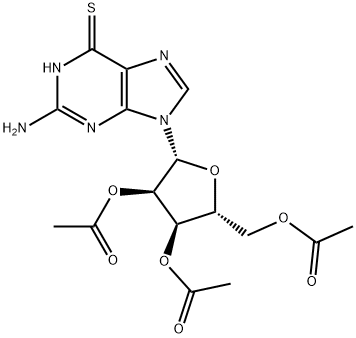
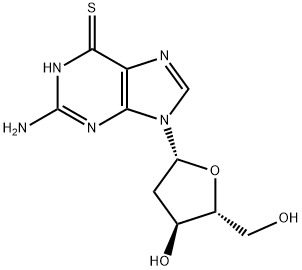

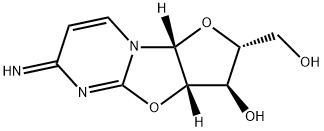

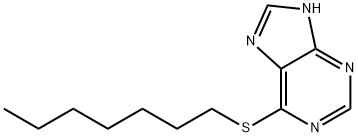


You may like
-
 6-Thioguanine, ≥98% CAS 154-42-7View Details
6-Thioguanine, ≥98% CAS 154-42-7View Details
154-42-7 -
 6-Thioguanine CAS 154-42-7View Details
6-Thioguanine CAS 154-42-7View Details
154-42-7 -
 6-Thioguanine CAS 154-42-7View Details
6-Thioguanine CAS 154-42-7View Details
154-42-7 -
 Tioguanine CAS 154-42-7View Details
Tioguanine CAS 154-42-7View Details
154-42-7 -
 6-Thioguanine CAS 154-42-7View Details
6-Thioguanine CAS 154-42-7View Details
154-42-7 -
 Thioguanine CAS 154-42-7View Details
Thioguanine CAS 154-42-7View Details
154-42-7 -
 2-Amino-6-MercaptopurineView Details
2-Amino-6-MercaptopurineView Details
154-42-7 -
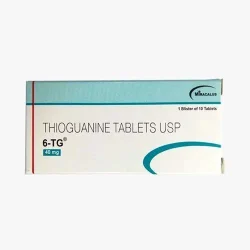 6- TG 40 mg TabletView Details
6- TG 40 mg TabletView Details
154-42-7
